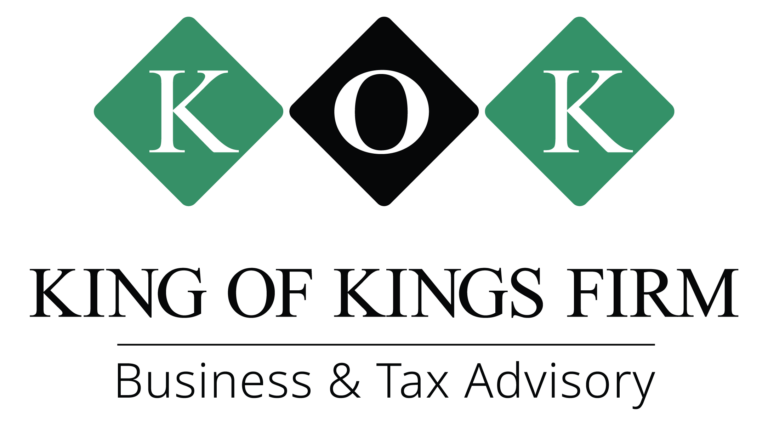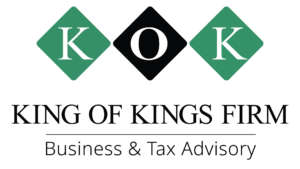Scaling a business without understanding your numbers is like trying to drive cross-country with no map and a broken gas gauge. You might get somewhere—but not where you want to go. At King of Kings Firm, we help small businesses and law firms forecast cash flow, track financial metrics, and create strategies to grow intentionally and sustainably.
In this post, we’ll break down why businesses struggle to scale, how better financial visibility can fix it, and what steps to take to create a useful cash flow forecast.
Why So Many Businesses Struggle to Scale
You’ve seen it before—or maybe you’re in the thick of it:
Revenue is growing, but the bank account feels empty
You’re hiring, expanding, or taking on more clients, but profits aren’t keeping up
You keep asking, Where is the money going?
The truth is, most scaling issues aren’t marketing, sales, or hiring problems. They’re cash flow problems caused by poor financial visibility.
Many business owners operate reactively, not proactively. They don’t look at their financials regularly, they don’t track key metrics, and they don’t forecast cash flow. So when growth comes—and it often comes fast—they’re not ready.
Why Accurate Financial Metrics Are Your Growth Foundation
If you want to scale, you need to know:
How much money is coming in (and when)
How much is going out (and on what)
What’s left to reinvest or save
Which areas are profitable and which are draining your resources
This is why at King of Kings Firm, we start every client engagement with a financial health check. We look at your P&L, balance sheet, liabilities, and cash flow over time to assess if your business is built on a strong foundation.
How to Forecast Cash Flow (In 4 Steps)
A cash flow forecast helps you anticipate shortfalls, plan for investments, and make better decisions. Here’s a simplified version of how we create one:
1. Gather Your Historical Data
Look at the last 6–12 months of income and expenses. This gives you a realistic view of your cash trends and seasonality.
2. Project Future Income
Estimate incoming cash based on booked work, sales goals, or client contracts. Be conservative here—it’s better to be surprised on the upside.
3. Estimate Future Expenses
Include recurring expenses (rent, salaries, software), upcoming large purchases (equipment, marketing pushes), and variable costs (contract labor, materials).
4. Track and Adjust Monthly
Review your forecast monthly to compare what actually happened versus what you projected. This helps you course-correct early and often.
Common Mistakes When Forecasting Cash Flow
Even well-meaning business owners make costly forecasting errors. Watch out for these common mistakes:
Overestimating Revenue
It’s easy to be optimistic, but your forecast should be grounded in actual trends, not hopes.
Forgetting Seasonality
Cash flow often dips or spikes during certain months—if you ignore this, your plan may fall short.
Not Accounting for Delays
Payment terms matter. Forecasting cash received (not just invoiced) prevents shortfalls.
Ignoring One-Time Expenses
Large purchases or repairs can throw off your entire forecast if unaccounted for.
Failing to Update the Forecast
Forecasts are living documents. Businesses grow and shift—your forecast should, too.
Why Cash Flow Forecasting Matters for Loan and Credit Line Approval
If your business is planning to apply for a loan or line of credit, forecasting cash flow isn’t just a helpful tool—it’s a critical necessity.
Lenders don’t only want to see your revenue or net profit. They want to know when money is coming in, how consistently it arrives, and whether you’ll have enough on hand to repay your obligations. Without a clear cash flow forecast, you may appear too risky—even if your business is technically profitable.
What Lenders Look For:
When reviewing applications, banks and lenders evaluate:
12-month cash flow projections to assess stability
Cash reserves and burn rate—how long you can operate without new income
Past cash flow statements to spot patterns and seasonal dips
Debt service coverage ratio (DSCR)—can you comfortably repay debt?
Even a profitable business can be denied a loan if the timing of its cash inflows and outflows puts repayment in jeopardy.
Learn more about what lenders look for in cash flow projections.
Key Takeaway
Forecasting cash flow shows lenders you run a financially disciplined business. It proves that you can manage debt responsibly and repay it on time. Without that evidence, even strong businesses can miss out on funding that fuels growth.Real-World Example: From Cash Crunch to Confident Scaling
Client Profile: A boutique design firm making $850K annually, growing rapidly through new client contracts. But despite increasing revenue, their bank account was tight, and the owner was losing sleep.
What We Uncovered:
70% of their income came in Q2 and Q4, but their payroll was steady year-round
A large tax payment due in April was not being planned for
They were investing in new hires before confirming project timelines
The Strategy:
Created a 12-month rolling cash flow forecast
Set aside savings for Q1 and Q3 slowdowns
Restructured client billing to improve upfront deposits
Built in tax planning to avoid surprises
The Outcome:
Within 90 days, they had 3 months of reserves
They confidently hired 2 team members with no stress
They now review financials monthly and have a tax plan in place year-round
Final Thoughts
Understanding your numbers isn’t just for tax season—it’s how you grow on purpose. If you want to scale smarter, forecast cash flow, track your metrics, and work with a team that understands how to build profitable, sustainable businesses.
At King of Kings Firm, we do more than prepare your taxes. We partner with you to plan ahead, protect your assets, and help you reach your goals with confidence.
Book a free consultation to review your cash flow and start scaling with strategy.
frequently asked questions
A cash flow forecast is a projection of your incoming and outgoing cash over time. It helps you plan for slow periods, avoid cash shortages, and make smart growth decisions.
We recommend reviewing your key financials—P&L, cash flow, and balance sheet—monthly. That cadence gives you time to adjust before small issues become big problems.
Absolutely. We specialize in helping small business owners and law firms understand their financials, forecast cash flow, and build a plan for profitable growth.






